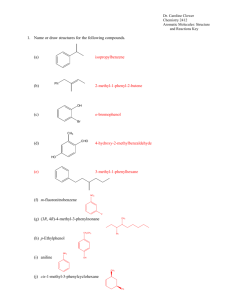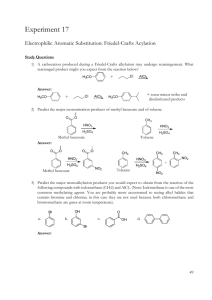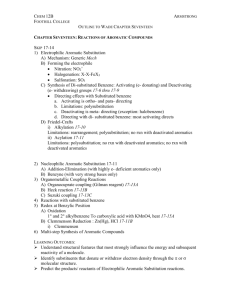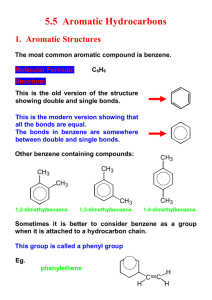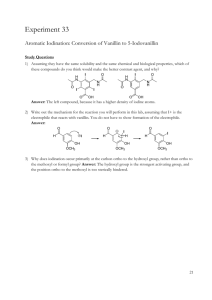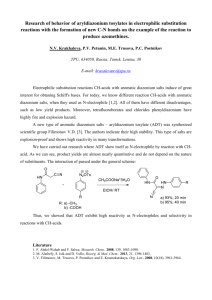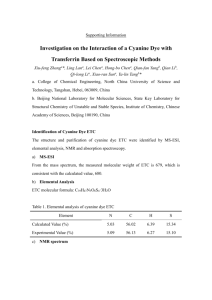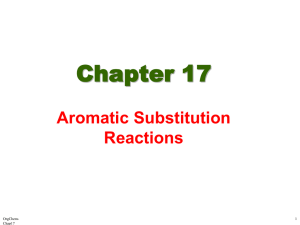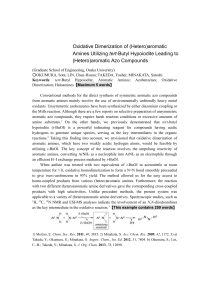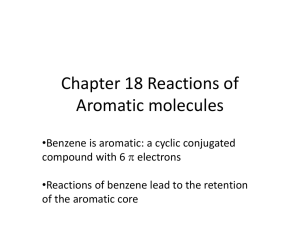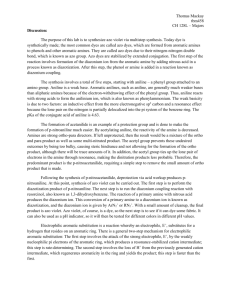Aromatic Molecules Structure and Reactions key
advertisement
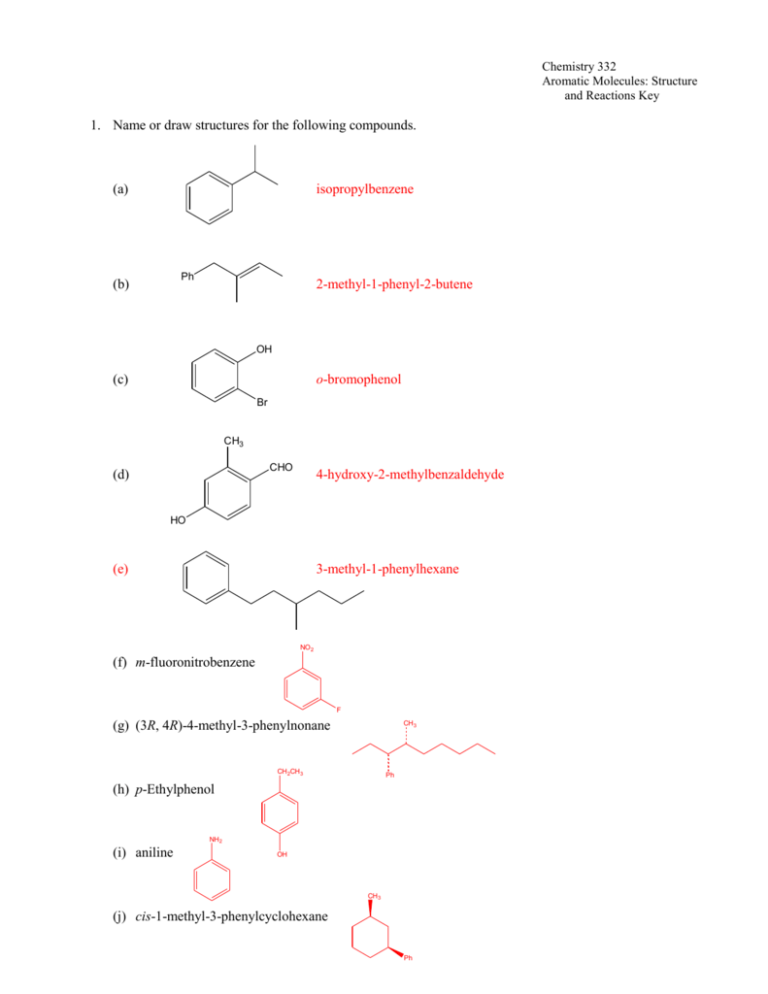
Chemistry 332 Aromatic Molecules: Structure and Reactions Key 1. Name or draw structures for the following compounds. (a) isopropylbenzene Ph (b) 2-methyl-1-phenyl-2-butene OH (c) o-bromophenol Br CH3 CHO (d) 4-hydroxy-2-methylbenzaldehyde HO (e) 3-methyl-1-phenylhexane NO 2 (f) m-fluoronitrobenzene F (g) (3R, 4R)-4-methyl-3-phenylnonane CH 3 CH 2CH 3 Ph (h) p-Ethylphenol NH 2 (i) aniline OH CH 3 (j) cis-1-methyl-3-phenylcyclohexane Ph Chemistry 332 Aromatic Molecules: Structure and Reactions Key 2. Classify each of the following compounds as aromatic, antiaromatic, or nonaromatic. (Assume all are planar) (a) aromatic (b) aromatic (c) nonaromatic (d) antiaromatic O (e) antiaromatic N N H OH (f) aromatic O (g) [18]annulene aromatic Chemistry 332 Aromatic Molecules: Structure and Reactions Key 3. Predict the major organic product(s) of each of the following reactions. If no reaction will occur, write “N.R.” NO2 (a) CH3Cl N.R. AlCl3 Cl (b) Cl Cl Cl Cl Cl Cl2 FeCl3 Cl Cl NO 2 (c) HNO3 (substitution reaction) H2SO4 4. Provide reagents by each arrow below to complete the following reaction scheme. Br CH3Cl Br2 AlCl3 h 1. Mg, Et2O 2. CH3CHO 3. H3O+ 1. CH3CH2C(O)Cl 2. H2, Pt Zn(Hg) HCl PCC O OH Chemistry 332 Aromatic Molecules: Structure and Reactions Key 5. (i) Draw the major product of the following reaction. NO 2 HNO3 H2SO4 (ii) Draw the major product formed from the reaction of the compound you drew in part (i) with another electrophile (E+). NO 2 E (iii) Draw the intermediate of the reaction described in part (ii). Include all valid, contributing resonance structures of this intermediate in your answer. NO 2 NO 2 NO 2 H H E H H E H E H (iv) Explain why the isomer you drew in part (ii) is the major product of this reaction (rather than any other isomers). A resonance structure for the ortho,para substitution have a positive charge on the carbon bearing the nitro group. This is very unstable because two positive charges are adjacent to one another. The resonance structures for the meta substitution are more stable, so the meta product is more likely to form. Chemistry 332 Aromatic Molecules: Structure and Reactions Key 6. Circle the letter that corresponds to the correct answer for each question. There is only one correct answer for each question. (i) Which of the statements is TRUE regarding the nitration reaction of isopropylbenzene? A. B. C. D. A 50:50 mixture of ortho and para products will be formed. A greater amount of the para product will be formed. A greater amount of the ortho product will be formed Only the meta product will be formed. (ii) Which of the following compounds would undergo the fastest Friedel-Crafts reaction? A. B. C. D. Nitrobenzene Aniline (F-C fails on benzene substituted with –NH2) Benzaldehyde Benzene (iii) Which of the following sets of substituents are ALL ortho/para directing groups in electrophilic aromatic substitution? A. B. C. D. Cl, CN, NO2 CH3, OCH3, C(O)CH3 Cl, NH2, CH3 CN, NO2, C(O)CH3 7. Aniline reacts with nitrous acid, HNO2, to yield a stable diazonium salt. This diazonium salt undergoes electrophilic aromatic substitution on activated aromatic rings to yield brightly colored azo compounds that are widely used as dyes. The intermediate structures for the mechanism of this reaction are given below. Show all electron flow with arrows for this mechanism on the structures provided.
